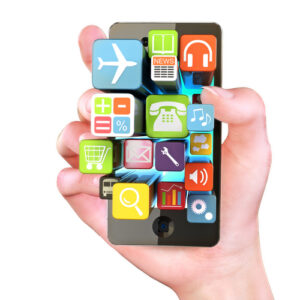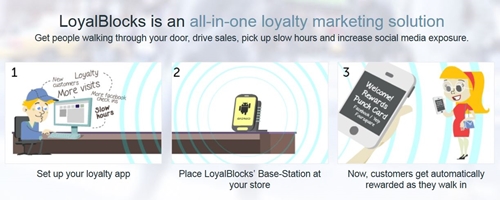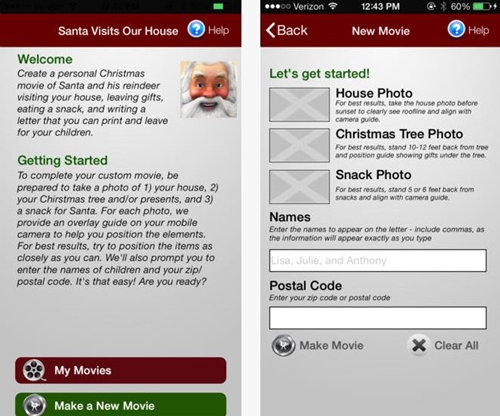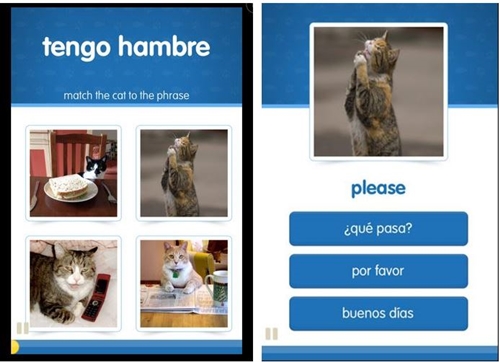 Early adopters of mobile technology in their digital marketing mix have been experiencing great results by providing convenient methods for customers and prospects to find, consume and act on brand information. Mobile commerce success is here too: According to IBM, 25.8% of total online sales for Thanksgiving, and 21.8% for Black Friday were via mobile.
Early adopters of mobile technology in their digital marketing mix have been experiencing great results by providing convenient methods for customers and prospects to find, consume and act on brand information. Mobile commerce success is here too: According to IBM, 25.8% of total online sales for Thanksgiving, and 21.8% for Black Friday were via mobile.
As companies discover innovative uses of mobile technology for marketing and communications, they can help differentiate their services, reinforce corporate culture, and build long-term customer loyalty.
With growing demand as a content delivery and customer experience channel, mobile applications represent a substantial digital and content marketing opportunity for brands. Mobile is now 28% of all web traffic and the smart money is on those companies and organizations that can attract, engage and convert through the creative content opportunities mobile apps provide.
If there were ever a time to double down on mobile apps as a content marketing tactic, it would be now.
Adopting Mobile Apps as Part of Your Content Marketing Strategy
As the Black Friday stats above prove, online spending is expected to rise for the fourth straight holiday season. Retail trends and the latest research leads eMarketer to believe that 72 million people in the U.S. will make a purchase through a mobile device in 2013, a figure that will increase nearly 65%, to 119 million, in 2016.
Market research firm NPD predicts “tablet shipments will reach more than 240 million units worldwide in 2013,” compared to a projected 207 million laptops. This is three years ahead of NPD’s original predictions, so now would be a good time to integrate tablet apps into your customer service functions.
With over 1 million smart phones being activated every day and 1+ billion smart phones expected by year end, business owners everywhere are adopting mobile apps as part of their marketing strategy and customer engagement initiatives.
Increasing Engagement, Sales and Loyalty with Mobile Apps
Businesses of all sizes are using mobile apps for customer service, support, engagement and loyalty with
- In-app offers
- Social sharing options
- Promotions and event notifications
- Instant feedback mechanisms
- One-touch calling and geo-location
- Push notifications
- Interactivity and learning
Customer Service & Support
Mobile apps are hugely popular for customer service. According to ClickFox, 78% of users reported using mobile apps for banking (30%), travel (26%) and dining (16%). But not all businesses are tapping the full potential of mobile apps. Sixty percent (60%) of the respondents said they never use mobile apps to handle utilities but 77% would find a utility app useful. [Infographic]
Customer Loyalty
Customer satisfaction and retention is the underlying goal of most businesses. A happy customer that buys repeatedly from you and refers others is invaluable. Paper punch cards and key chain rewards cards are a hassle any more, yet value conscious customers still want to be rewarded for their loyalty to your business.
Today’s mobile devices make it easy to step up with digital rewards programs. The newest apps not only reward customers, but also gather data about your shoppers’ purchases, habits and preferences. Here’s a great list from American Express OPENForum: 10 Cool Apps to Boost Customer Loyalty.
Not surprisingly, restaurant owners are supplementing their old loyalty-card programs with mobile options, such as Front Flip and Belly.
Customer Engagement
Apps are naturally built for ‘stickiness.’ One catalog retailer took mobile engagement to a more sophisticated level. They tested URL links in emails that drove users online against links that dropped consumers directly into its mobile app. The app links delivered a 6x increase in mobile engagement. Regularly using push notifications and social sharing will keep your app at the forefront of your customer’s minds, driving deeper engagement.
Mobile App Pros:
- Provides a ready feedback mechanism, reducing customer abandonment and building trust
- Reward frequent customers with exclusive offers and badges for participation, increasing repeat visits and customers
- Improve the customer experience and sales by gathering invaluable data, such as frequency of customer interactions and length of time between customer visits, to get a more complete picture of your customer’s loyalty.
Mobile App Cons:
- Poor cross channel and platform integration diminishes customer loyalty and user experience
- Complexity may prevent customers from using the app to its full potential
- Creating a poor customer experience will ruin any potential for adoption. Over half will delete and forget a broken app, according to ClickFox.
What the Experts Are Saying:
“Mobile isn’t a platform, it’s a set of behaviors — don’t think about the devices, think about the context. Much mobile usage actually happens inside the home. It’s changing the behavior of how we consume content on the couch, not just on the train.” Craig Waller, Head of Content Operations, Pace
“Rethink your web experiences. Old approaches like giving people access to low-tech ‘tools’ on a website are not enough. We download apps like candy. Customizing content, taking advantage of location, and thinking about real-time opportunities are key.” Heather Meza, Head of the Digital Media Solutions Center, of Expertise, Cisco
“The reality is that mobile is often the first screen your audience is using to interact with your content. The key is to optimize, rather than develop a custom app. Ensure your content is readable on mobile devices, get rid of the too-small fonts, and include more visuals.” Amanda Maksymiw, Content Marketing Manager, Lattice Engines (A TopRank client)
“Mobile is no longer an emerging channel. Along with social media, it’s become an essential part of every digital marketer’s strategy: 2013 was, finally, the year of mobile.” MarketingProfs
Mobile App Examples:
LoyaltyBlocks
This app automatically provides rewards and offers to customers simply for walking into your store. Businesses register online, use an Android tablet or mobile phone as a “base station,” download the Business App, and customize the rewards (“tokens”) for their customers. Once those customers download the app to their mobile devices, the LoyaltyBlocks system automatically recognizes them, punches their mobile punch-cards and sends them tailored rewards every time they come in the door.

Santa Visits Our House from waveSpawn
The application prompts users to take a photo of their house, Christmas tree and snack for Santa. Additionally, children’s names and postal code are entered to fully customize the experience. The app will then render a custom movie of Santa flying over the house, delivering presents under the tree, writing a custom letter, eating the snack and then flying away. It’s a magical way to capture Santa visiting your house and share the moment with children and grandchildren. $1.99 at iTunes

CatAcademy from Memrise
Memrise is an online learning platform that combines the best insights from the art and science of memory to provide extraordinarily effective, game-like learning experiences.
CatAcademy is not an app for people who are actively searching for language learning apps,” COO Ben Whately told TechCrunch recently. It’s targeted at language learning procrastinators; people who may have considered learning Spanish but always find themselves firing up a time-wasting app, like Bejeweled or Angry Birds.
“Our aim is to make learning a language genuinely accessible to everyone,” Whately said. “Language learning needs to compete with other forms of procrastination. It’s not enough to just be accurate and be effective and efficient; it actually needs to be captivating.”

We’re a scientific group, and data driven – but the data did drive us towards cats.
Best Practices for Creating Mobile Apps That Engage
Know your customers. Right now, retention is the most difficult problem facing mobile apps. Cultivating relationships starts with one interaction at a time. Including rating prompts and surveys allows you to easily connect with your customers to understand what needs to be improved over time.
Create deep linking functionality. When we open emails on our mobile devices, we want to be sent to the mobile version of the site. Use your marketing to drive people to the correct landing page with deep links, which extends all your digital marketing efforts.
Build for multiple platforms. While it’s challenging to design and build apps across platforms, platforms and operating systems will only continue to grow. In order to provide a consistent user experience, reconciling the unique native languages of each platform is imperative. Read more at NextWeb.
Test the application. If your app freezes or crashes, you won’t get a second chance with customers. The more you invest in making your app a quality product, the better your app will be and the more likely people will want to download it and use it and, even, pay for it.
Making a great app starts with your customers. If you build for them, learn from them, and make it easy for them to use it you will be making a better app than the majority of what’s available.
What do you think? Is there a mobile app in your future?
If you like this post and want a deep dive into other content marketing tactics, be sure to visit our index on the topic.


